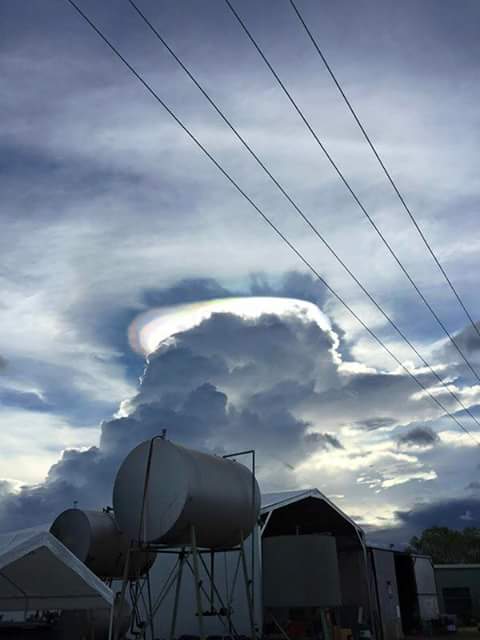These intense fire rainbow clouds appeared on top of a thunderstorm over Burketown, Australia.
The iridescent clouds were captured by Kelly Bethel on February 3, 2016.

Iridescent clouds form on top of cumulus clouds after thunderstorms, when air is pushed up rapidly, causing it to cool and expand. Water droplets condense that can then act as prisms, forming a rainbow cap over the cumulus cloud.

In contrast, fire rainbow clouds are rare formations caused by a unique alignment of forces in the atmosphere. Technically called a circumhorizontal arc, fire rainbows are caused by light passing through wispy, high-altitude cirrus clouds.

Fire rainbows occur only when the sun is very high in the sky. Moreover, the hexagonal ice crystals that make up cirrus clouds must be shaped like thick plates with their faces parallel to the ground.

When light enters through a vertical side face of such an ice crystal and leaves from the bottom face, it refracts, or bends, in the same way that light passes through a prism. If a cirrus cloud’s crystals are aligned just right, the whole section lights up in a spectrum of colors.












